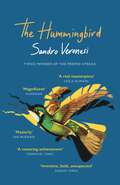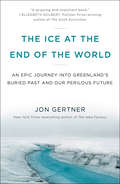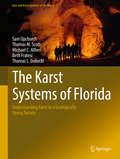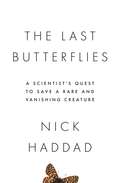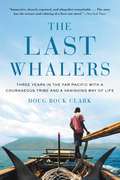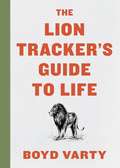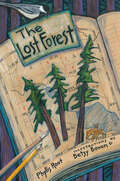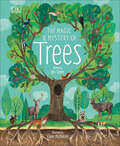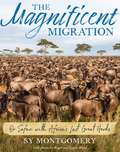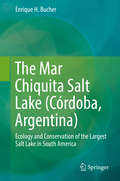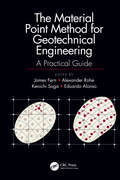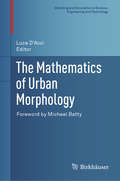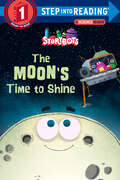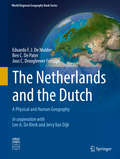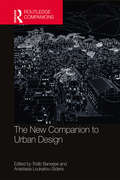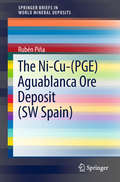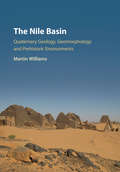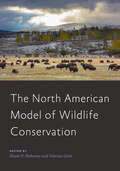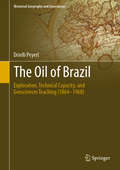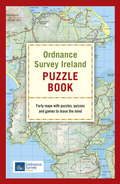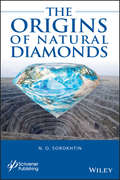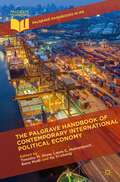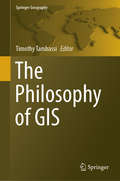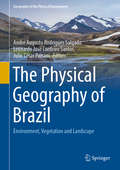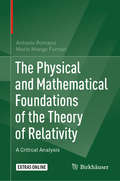- Table View
- List View
The Hummingbird: ‘Magnificent’ (Guardian)
by Sandro VeronesiA BOOK OF THE YEAR FOR THE GUARDIAN: 'DEEPLY PLEASURABLE'A BOOK OF THE YEAR FOR THE SPECTATOR: 'WHAT A JOY''Magnificent' Guardian'A towering achivement' Financial Times'Inventive, bold, unexpected' Sunday Times'Everything that makes the novel worthwhile and engaging is here: warmth, wit, intelligence, love, death, high seriousness, low comedy, philosophy, subtle personal relationships and the complex interior life of human beings'Guardian'Not since William Boyd's Any Human Heart has a novel captured the feast and famine nature of a single life with such invention and tenderness'Financial Times'There is a pleasing sense of having grappled with the real stuff of life: loss, grief, love, desire, pain, uncertainty, confusion, joy, despair - all while having fun'The Sunday Times'Instantly immersive, playfully inventive, effortlessly wise'Observer'Masterly: a cabinet of curiosities and delights, packed with small wonders'Ian McEwan'A real masterpiece. A funny, touching, profound book that made me cry like a little girl on the last page'Leïla Slimani'A remarkable accomplishment, a true gift to the world'Michael Cunningham'Ardent, gripping, and inventive to the core'Jhumpa LahiriMarco Carrera is 'the hummingbird,' a man with the almost supernatural ability to stay still as the world around him continues to change.As he navigates the challenges of life - confronting the death of his sister and the absence of his brother; taking care of his parents as they approach the end of their lives; raising his granddaughter when her mother, Marco's own child, can no longer be there for her; coming to terms with his love for the enigmatic Luisa - Marco Carrera comes to represent the quiet heroism that pervades so much of our everyday existence.A thrilling novel about the need to look to the future with hope and live with intensity to the very end.THE NO. 1 INTERNATIONAL BESTSELLEROver 300,000 copies soldSoon to be a major motion pictureWinner of the Premio StregaWinner of the Prix du Livre EtrangerBook of the Year for the Corriere della Sera
The Ice at the End of the World: An Epic Journey into Greenland's Buried Past and Our Perilous Future
by Jon GertnerA riveting, urgent account of the explorers and scientists racing to understand the rapidly melting ice sheet in Greenland, a dramatic harbinger of climate change“Jon Gertner takes readers to spots few journalists or even explorers have visited. The result is a gripping and important book.”—Elizabeth Kolbert, Pulitzer Prize–winning author of The Sixth Extinction Greenland: a remote, mysterious island five times the size of California but with a population of just 56,000. The ice sheet that covers it is 700 miles wide and 1,500 miles long, and is composed of nearly three quadrillion tons of ice. For the last 150 years, explorers and scientists have sought to understand Greenland—at first hoping that it would serve as a gateway to the North Pole, and later coming to realize that it contained essential information about our climate. Locked within this vast and frozen white desert are some of the most profound secrets about our planet and its future. Greenland’s ice doesn’t just tell us where we’ve been. More urgently, it tells us where we’re headed. In The Ice at the End of the World, Jon Gertner explains how Greenland has evolved from one of earth’s last frontiers to its largest scientific laboratory. The history of Greenland’s ice begins with the explorers who arrived here at the turn of the twentieth century—first on foot, then on skis, then on crude, motorized sleds—and embarked on grueling expeditions that took as long as a year and often ended in frostbitten tragedy. Their original goal was simple: to conquer Greenland’s seemingly infinite interior. Yet their efforts eventually gave way to scientists who built lonely encampments out on the ice and began drilling—one mile, two miles down. Their aim was to pull up ice cores that could reveal the deepest mysteries of earth’s past, going back hundreds of thousands of years. Today, scientists from all over the world are deploying every technological tool available to uncover the secrets of this frozen island before it’s too late. As Greenland’s ice melts and runs off into the sea, it not only threatens to affect hundreds of millions of people who live in coastal areas. It will also have drastic effects on ocean currents, weather systems, economies, and migration patterns. Gertner chronicles the unfathomable hardships, amazing discoveries, and scientific achievements of the Arctic’s explorers and researchers with a transporting, deeply intelligent style—and a keen sense of what this work means for the rest of us. The melting ice sheet in Greenland is, in a way, an analog for time. It contains the past. It reflects the present. It can also tell us how much time we might have left.
The Karst Systems of Florida: Understanding Karst in a Geologically Young Terrain (Cave and Karst Systems of the World)
by Sam Upchurch Thomas M. Scott Michael C. Alfieri Beth Fratesi Thomas L. DobeckiThis book discusses the geology, hydrogeology, and water quality/geochemistry of karst systems in geologically young terrain, using the state of Florida as an example. Also discussed are sinkhole-development models; sinkhole risk; eogenetic karst features developed in rocks as young as 125,000 years and as old as 65 million years; and karst landscapes of Florida, including regional geology and geomorphology with important examples of karst features, such as springs, sinkholes, caves, and other karst landforms. The eogenetic karst of Florida is largely covered and this book extensively discusses the interactions of karst processes with sand- and clay-rich cover materials.
The Last Butterflies: A Scientist's Quest to Save a Rare and Vanishing Creature
by Nick HaddadA remarkable look at the rarest butterflies, how global changes threaten their existence, and how we can bring them back from near-extinctionMost of us have heard of such popular butterflies as the Monarch or Painted Lady. But what about the Fender’s Blue? Or the St. Francis’ Satyr? Because of their extreme rarity, these butterflies are not well-known, yet they are remarkable species with important lessons to teach us. The Last Butterflies spotlights the rarest of these creatures—some numbering no more than what can be held in one hand. Drawing from his own first-hand experiences, Nick Haddad explores the challenges of tracking these vanishing butterflies, why they are disappearing, and why they are worth saving. He also provides startling insights into the effects of human activity and environmental change on the planet’s biodiversity.Weaving a vivid and personal narrative with ideas from ecology and conservation, Haddad illustrates the race against time to reverse the decline of six butterfly species. Many scientists mistakenly assume we fully understand butterflies’ natural histories. Yet, as with the Large Blue in England, we too often know too little and the conservation consequences are dire. Haddad argues that a hands-off approach is not effective and that in many instances, like for the Fender’s Blue and Bay Checkerspot, active and aggressive management is necessary. With deliberate conservation, rare butterflies can coexist with people, inhabit urban fringes, and, in the case of the St. Francis’ Satyr, even reside on bomb ranges and military land. Haddad shows that through the efforts to protect and restore butterflies, we might learn how to successfully confront conservation issues for all animals and plants.A moving account of extinction, recovery, and hope, The Last Butterflies demonstrates the great value of these beautiful insects to science, conservation, and people.
The Last Whalers: Three Years in the Far Pacific with a Courageous Tribe and a Vanishing Way of Life
by Doug Bock Clark<P><P>On a volcanic island in the Savu Sea so remote that other Indonesians call it "The Land Left Behind" live the Lamalerans: a tribe of 1,500 hunter-gatherers who are the world's last subsistence whalers. They have survived for half a millennium by hunting whales with bamboo harpoons and handmade wooden boats powered by sails of woven palm fronds. <P><P>But now, under assault from the rapacious fores of the modern era and a global economy, their way of life teeters on the brink of collapse. <P><P>Award-winning journalist Doug Bock Clark, one of a handful of Westerners who speak the Lamaleran language, lived with the tribe across three years, and he brings their world and their people to vivid life in this gripping story of a vanishing culture. Jon, an orphaned apprentice whaler, toils to earn his harpoon and provide for his ailing grandparents, while Ika, his indomitable younger sister, is eager to forge a life unconstrained by tradition, and to realize a star-crossed love. Frans, an aging shaman, tries to unite the tribe in order to undo a deadly curse. And Ignatius, a legendary harpooner entering retirement, labors to hand down the Ways of the Ancestors to his son, Ben, who would secretly rather become a DJ in the distant tourist mecca of Bali. <P><P>Deeply empathetic and richly reported, The Last Whalers is a riveting, powerful chronicle of the collision between one of the planet's dwindling indigenous peoples and the irresistible enticements and upheavals of a rapidly transforming world.
The Lion Tracker's Guide to Life
by Boyd VartySomewhere deep inside, you know what your gift, purpose, and mission are. Boyd Varty, a lion tracker and life coach, reveals how the wisdom from the ancient art of tracking can teach you how to recognize these essential ingredients in a meaningful life. Know how to navigate, don’t worry about the destination, and stay alert. These are just a few of the strategies that contribute to both successful lion tracking and a life of fulfillment. When we join Boyd Varty and his two friends tracking lions, we are immersed in the South African bush, and, although we learn some of the skills required for actual tracking, the takeaways are the strategies that can be applied to our everyday lives. Trackers learn how to use all of their senses to read the environment and enter into a state of “greater aliveness.” When we learn to find and follow our inner tracks, we learn to see what is deeply important to us. In the same way the trip in the classic Zen and the Art of Motorcycle Maintenance was a vehicle to examine how to live out our values, the story of this one-day adventure—with danger and suspense along the way—uses the ancient art of tracking to convey profound lessons on how to live a purposeful, meaningful life of greater harmony.
The Lost Forest
by Phyllis RootThe story of a forest &“lost&” by a surveying error—and all the flora and fauna to be found thereA forest, of course, doesn&’t need a map to know where to grow. But people need a map to find it. And in 1882 when surveyors set out to map a part of Minnesota, they got confused, or tired and cold (it was November), and somehow mapped a great swath of ancient trees as a lake. For more than seventy-five years, the mistake stayed on the map, and the forest remained safe from logging—no lumber baron expects to find timber in a lake, after all. The Lost Forest tells the story of this lucky error and of the 144 acres of old-growth red and white pine it preserved. With gentle humor, Phyllis Root introduces readers to the men at their daunting task, trekking across Minnesota, measuring and marking the vast land into townships and sections and quarters. She takes us deep into a stand of virgin pine, one of the last and largest in the state, where U.S. history and natural history meet. With the help of Betsy Bowen&’s finely observed and beautiful illustrations, she shows us all the life that can be found in the Lost Forest.Accompanying the story is a wealth of information about the Cadastral Survey and about the plants and animals that inhabit forests—making the book a valuable guide for readers who might want to look even deeper into the history of Minnesota, the flora and fauna of old-growth forests, and the apportioning of land in America.
The Magic and Mystery of Trees (The Magic and Mystery of the Natural World)
by Jen GreenThis breath-taking ebook about trees takes children on a captivating journey of nature packed leafy exploration, showing them just how special these mighty organisms are. Discover how they communicate and warn each other of predators, how they nurture their networks, record the past, and anticipate the future to ensure their survival. There's so much more to trees than meets the eye. Learn about the amazing natural science of trees in this nature and science children's ebook. From the highest branches, all the down to the complex "wood wide web" of roots, every part of a tree plays an important role. Not only in its own growth but that of the whole ecosystem of the forest or woodland. Did you know that trees take care of each other and that a whole forest is connected?A truly delightful non-fiction read that is suitable for all ages - each page of this nature ebook is nothing short of astonishingly beautiful. Enjoy a mixture of real images, vibrant illustrations, and patchwork-layering, making each page feel like a nature scavenger hunt. You'll learn unbe-leaf-able tree facts, see extraordinary trees from around the world, and the animals that call them home. Find out what trees do for us and how we are damaging them with pollution and deforestation. This ebook will show that it's not too late to do something about it, and you'll find out how you can help with instructions on how to plant your very own tree!When you get to know these silent giants, you'll never look at trees the same way again.Discover The Secret World Of TreesDo you know that trees send underground messages? Have you heard that they take care of their families? A tree is so much more than it seems. The Magic And Mystery of Trees is the perfect introduction to the world of trees - above and below ground. Combining stunning photography with beautiful illustrations, turn the pages to find out how trees help prevent soil erosion, mark the seasons, and provide a habitat for wildlife - amongst other fun facts and amazing information about their role in nature.There are also some super fun, practical activities for kids! From planting your own tree to how to measure a tree&’s age, this ebook highlights the importance of trees to our planet through exciting hands-on activities. Children will begin to understand the importance of trees to our planet and take their first steps towards safeguarding them for future generations. Explore the secret lives of trees learning:- What they are- How they live- About their animal assistants- How to help trees- Tree defenses and senses, and much more!
The Magnificent Migration: On Safari with Africa's Last Great Herds
by Sy MontgomerySibert medalist and National Book Award finalist Sy Montgomery takes readers on a staggering, emotional journey alongside the greatest land migration on the planet earth—that of the wildebeest across the Serengeti—to explore the mystery and wonder of migration in a sweeping story sure to leave its mark. With full color photography. Sibert medalist Sy Montgomery takes readers on a staggering, emotional journey alongside the greatest land migration on earth—that of the wildebeest across the Serengeti—to provide a you-are-there account of one of nature’s most fascinating occurrences. Montgomery explores the wonder of migration, asking questions like, how do migration patterns sculpt the environment? Why do animals migrate? And how do they know where to go? With lyrical prose, abundant facts, and the inclusion of other species who undertake remarkable migrations, Montgomery makes a journey of thousands of miles fly by—but not without leaving its mark. Full color photography.
The Mar Chiquita Salt Lake (Córdoba, Argentina): Ecology and Conservation of the Largest Salt Lake in South America
by Enrique H. BucherThis book provides a comprehensive, updated syntheses of all the information available on Mar Chiquita, covering various aspects of the geography, geological history, biology and ecology of the site, as well as a detailed analysis of the current land-use patterns, environmental threats, and conservation issues. Mar Chiquita, located in the province of Cordoba, Argentina, is a protected wilderness area that includes South America’s largest saline lake and wetland. It has a very rich bird biodiversity, including three of the six species of flamingos that exist in the world, and high numbers of intercontinental migratory shorebirds. For this reason, the area has been declared an International Site by the Ramsar Convention on Wetlands of International Importance, and also a Site of Hemispheric Importance by the Western Hemisphere Shorebird Reserves Network. Largely unknown until very recently, particularly in terms of the English literature, the site is rapidly gaining international visibility, not only in terms of scientific research, but also as site of interest for the nature lovers around the globe. Written in a language accessible to the non-specialists, the book focuses on integrating the dynamic, functional processes in the ecosystem, while at the same time providing the necessary descriptive information. Accordingly, it is of interest to scientists from diverse disciplines interested in saline wetlands, as well as to students, managers, and the general public.
The Material Point Method for Geotechnical Engineering: A Practical Guide
by James Fern Alexander Rohe Kenichi Soga Eduardo AlonsoThis practical guide provides the best introduction to large deformation material point method (MPM) simulations for geotechnical engineering. It provides the basic theory, discusses the different numerical features used in large deformation simulations, and presents a number of applications -- providing references, examples and guidance when using MPM for practical applications. <P><P>MPM covers problems in static and dynamic situations within a common framework. It also opens new frontiers in geotechnical modelling and numerical analysis. It represents a powerful tool for exploring large deformation behaviours of soils, structures and fluids, and their interactions, such as internal and external erosion, and post-liquefaction analysis; for instance the post-failure liquid-like behaviours of landslides, penetration problems such as CPT and pile installation, and scouring problems related to underwater pipelines. In the recent years, MPM has developed enough for its practical use in industry, apart from the increasing interest in the academic world.
The Mathematics of Urban Morphology (Modeling and Simulation in Science, Engineering and Technology)
by Michael Batty Luca D'AcciThis edited volume provides an essential resource for urban morphology, the study of urban forms and structures, offering a much-needed mathematical perspective. Experts on a variety of mathematical modeling techniques provide new insights into specific aspects of the field, such as street networks, sustainability, and urban growth. The chapters collected here make a clear case for the importance of tools and methods to understand, model, and simulate the formation and evolution of cities.The chapters cover a wide variety of topics in urban morphology, and are conveniently organized by their mathematical principles. The first part covers fractals and focuses on how self-similar structures sort themselves out through competition. This is followed by a section on cellular automata, and includes chapters exploring how they generate fractal forms. Networks are the focus of the third part, which includes street networks and other forms as well. Chapters that examine complexity and its relation to urban structures are in part four.The fifth part introduces a variety of other quantitative models that can be used to study urban morphology. In the book’s final section, a series of multidisciplinary commentaries offers readers new ways of looking at the relationship between mathematics and urban forms.Being the first book on this topic, Mathematics of Urban Morphology will be an invaluable resource for applied mathematicians and anyone studying urban morphology. Additionally, anyone who is interested in cities from the angle of economics, sociology, architecture, or geography will also find it useful."This book provides a useful perspective on the state of the art with respect to urban morphology in general and mathematics as tools and frames to disentangle the ideas that pervade arguments about form and function in particular. There is much to absorb in the pages that follow and there are many pointers to ways in which these ideas can be linked to related theories of cities, urban design and urban policy analysis as well as new movements such as the role of computation in cities and the idea of the smart city. Much food for thought. Read on, digest, enjoy." From the foreword by Michael Batty
The Moon's Time to Shine (Step into Reading)
by StorybotsJust in time for the 50th anniversary of the moon landing! The inquisitive crew from the award-winning StoryBots apps, videos, and Emmy Award-winning Netflix show star in a Step 1 reader that is over the moon!Children will recognize the signature catchy rhymes and colorful art from the StoryBots' popular YouTube video "The Moon's Time to Shine." They will learn that the moon orbits Earth, that--in spite of glowing brightly--it doesn't make its own light, and more! Step 1 readers feature big type and easy words for children who know the alphabet and are eager to begin reading. Rhyming text is paired with picture clues to help children decode the story.
The Netherlands and the Dutch: A Physical and Human Geography (World Regional Geography Book Series)
by Eduardo F. De Mulder Ben C. De Pater Joos C. Droogleever Fortuijn Len A. De Klerk Jerry Van DijkThis book presents a geographical survey of the Netherlands, reviewing recent and historic developments that made the nation. It is a relatively wealthy country and the Dutch belong to the happiest and healthiest on earth. But these qualities are not evenly spread over the country. The urban agglomeration of Randstad Holland in the west hosts most of the nation’s capital and young, well-educated people whereas older and less-educated people are concentrated in the peripheral areas in the north, east and south. Interactions between physical and human geographical aspects of the Netherlands are described quite extensively. Its position on one of Europe’s most prominent deltas, its abundance of energy resources and the course of history have all contributed to its present national position and international networks. But early and recent Dutch have also shaped this country. They reclaimed lakes and shallow seas, protected the lowlands against floods, re-allotted land parcels and designed and developed urban areas. Besides its focus on water-related topics, the book also covers social and cultural aspects. The book also discusses future challenges and offers scenarios for solutions. This is a book for those interested in a wide variety of recent aspects of the geography of the Netherlands described in a historical context. It appeals to students and researchers of many disciplines in geography, urban and landscape planning, water management, history and cultural studies.
The New Companion to Urban Design
by Tridib Banerjee Anastasia Loukaitou-SiderisThe New Companion to Urban Design continues the assemblage of rich and critical ideas about urban form and design that began with the Companion to Urban Design (Routledge, 2011). With chapters from a new set of contributors, this sequel offers a more comparative perspective representing multiple voices and perspectives from the Global South. The essays in this volume are organized in three parts: Part I: Comparative Urbanism; Part II: Challenges; and Part III: Opportunities. Each part contains distinct sections designed to address specific themes, and includes a list of annotated suggested further readings at the end of each chapter. Part I: Comparative Urbanism examines different variants of urbanism in the Global North and the Global South, produced by a new economic order characterized by the mobility of labor, capital, information, and technology. Part II: Challenges discusses some of the contemporary challenges that cities of the Global North and the Global South are facing and the possible role of urban design. This part discusses spatial claims and conflicts, challenges generated by urban informality, explosive growth or dramatic shrinkage of the urban settlement, gentrification and displacement, and mimesis, simulacra and lack of authenticity. Part III: Aspirations discusses some normative goals that urban design interventions aspire to bring about in cities of the Global North and the Global South. These include resilience and sustainability, health, conservation/restoration, justice, intelligence, access and mobility, and arts and culture. The New Companion to Urban Design is primarily intended for scholars and graduate students interested in cities and their built environment. It offers an invaluable and up-to-date guide to current thinking across a range of disciplines including urban design, planning, urban studies, and geography.
The Ni-Cu- (SpringerBriefs in World Mineral Deposits)
by Rubén PiñaThis book describes the Aguablanca Ni-Cu-PGE sulfide deposit, the first, and to date only, mineralization of this type in southwestern (SW) Europe. Since its discovery in 1993, this ore deposit has attracted the attention of the resource geology community due to its unusual geodynamic context, namely an active plate margin. The book focuses on the key features of the deposit and reports on the ore-forming processes that were most important for its formation.
The Nile Basin: Quaternary Geology, Geomorphology and Prehistoric Environments
by Martin WilliamsThe Nile Basin contains a record of human activities spanning the last million years. However, the interactions between prehistoric humans and environmental changes in this area are complex and often poorly understood. This comprehensive book explains in clear, non-technical terms how prehistoric environments can be reconstructed, with examples drawn from every part of the Nile Basin. Adopting a source-to-sink approach, the book integrates events in the Nile headwaters with the record from marine sediment cores in the Nile Delta and offshore. It provides a detailed record of past environmental changes throughout the Nile Basin and concludes with a review of the causes and consequences of plant and animal domestication in this region and of the various prehistoric migrations out of Africa into Eurasia and beyond. A comprehensive overview, this book is ideal for researchers in geomorphology, climatology and archaeology.
The North American Model of Wildlife Conservation (Wildlife Management and Conservation)
by Shane P. Mahoney and Valerius GeistThe foremost experts on the North American Model of Wildlife Conservation come together to discuss its role in the rescue, recovery, and future of our wildlife resources.At the end of the nineteenth century, North America suffered a catastrophic loss of wildlife driven by unbridled resource extraction, market hunting, and unrelenting subsistence killing. This crisis led powerful political forces in the United States and Canada to collaborate in the hopes of reversing the process, not merely halting the extinctions but returning wildlife to abundance. While there was great understanding of how to manage wildlife in Europe, where wildlife management was an old, mature profession, Continental methods depended on social values often unacceptable to North Americans. Even Canada, a loyal colony of England, abandoned wildlife management as practiced in the mother country and joined forces with like-minded Americans to develop a revolutionary system of wildlife conservation. In time, and surviving the close scrutiny and hard ongoing debate of open, democratic societies, this series of conservation practices became known as the North American Model of Wildlife Conservation.In this book, editors Shane P. Mahoney and Valerius Geist, both leading authorities on the North American Model, bring together their expert colleagues to provide a comprehensive overview of the origins, achievements, and shortcomings of this highly successful conservation approach. This volume• reviews the emergence of conservation in late nineteenth–early twentieth century North America• provides detailed explorations of the Model's institutions, principles, laws, and policies• places the Model within ecological, cultural, and socioeconomic contexts• describes the many economic, social, and cultural benefits of wildlife restoration and management• addresses the Model's challenges and limitations while pointing to emerging opportunities for increasing inclusivity and optimizing implementationStudying the North American experience offers insight into how institutionalizing policies and laws while incentivizing citizen engagement can result in a resilient framework for conservation. Written for wildlife professionals, researchers, and students, this book explores the factors that helped fashion an enduring conservation system, one that has not only rescued, recovered, and sustainably utilized wildlife for over a century, but that has also advanced a significant economic driver and a greater scientific understanding of wildlife ecology.Contributors: Leonard A. Brennan, Rosie Cooney, James L. Cummins, Kathryn Frens, Valerius Geist, James R. Heffelfinger, David G. Hewitt, Paul R. Krausman, Shane P. Mahoney, John F. Organ, James Peek, William Porter, John Sandlos, James A. Schaefer
The Oil of Brazil: Exploration, Technical Capacity, and Geosciences Teaching (1864-1968) (Historical Geography and Geosciences)
by Drielli PeyerlThis book investigates the role of the National Petroleum Council (CNP) and especially of Petrobras in the construction and shaping of courses in Geosciences, as part of the historical process of the search for and exploration of oil, which began in Brazil in 1864 and ended in 1968 with the discovery of the first offshore well.The book explores the history of the discovery of oil in Brazil together with the historical development of oil research and geosciences in Brazil. It also elucidates significant events and developments which occurred between 1864 and 1968 such as the foundation of the Ouro Preto Mining School, the foundation of the CNP and Petrobras and other scientific societies and universities and their contributions to the formation and constitution of geosciences in Brazil. This book also discusses the massive investments by CNP and Petrobras in technical and scientific research for oil exploration in the Brazilian territory.This unique book appeals to scientists, students and professionals in geosciences, history and related fields.
The Ordnance Survey Ireland Puzzle Book
by Ordnance Survey IrelandCan you guess the nine counties the Wild Atlantic Way passes through?Would you be able to identify on the map the highest point in the Burren?Or work out the distance from one point to another as the crow flies?With forty maps and hundreds of puzzles ranging from Easy to Challenging, the Ordnance Survey Ireland Puzzle Book is guaranteed to test your wits, put your friends and family through their paces and cause plenty of good-natured arguments along the way.With questions covering the island of Ireland - from Cork to Dublin, Waterford to Belfast - this unique puzzle book will get your brain fired up and reacquaint you with Ireland's coastlines, rivers, lakes, valleys and mountain ranges, while you rediscover the joy of maps.A fun-filled book jam-packed with facts, general knowledge questions and brain-teasers - enjoyment for all the family.
The Origins of Natural Diamonds
by N. O. SorokhtinThis is not just the story of the origin, evolution, and production of diamonds, but a story about the evolution of the Earth’s geology in general. Important to geologists, geophysicists, and engineers across multiple disciplines, written by an expert in the field and an expert on the Earth’s geological evolution, this volume represents the state-of-the-art in major Earth geological processes. Of particular importance to mining engineers and petroleum engineers, it is also a practical guide for those who work in the mining or petroleum industry. Valuable as either a learning tool for the student or as a reference or refresher for the veteran scientist or engineer, the author explains important geological processes, such as the Earth’s origin, composition, and structure, the Earth’s energy balance, continental drift, tectonic activity, the evolution of the Earth’s crust, and others. It is within this geological framework that the author offers practical guidance for engineers and scientists who work in industry or academia. It is a must-have for any geologist, geophysicist, or engineer working in mining or petroleum engineering.
The Palgrave Handbook of Contemporary International Political Economy (Palgrave Handbooks in IPE)
by Timothy M. Shaw Xu Yi-Chong Renu Modi Laura C. MahrenbachPublished 35 years after Palgrave Macmillan’s landmark International Political Economy (IPE) series was first founded, this Handbook captures the state of the art of contemporary IPE. It draws on the series’ history of focusing on the oft-neglected study of the global South.Providing interdisciplinary perspectives from scholars hailing from the global North and South, the Handbook illustrates the theoretical innovations and empirical richness necessary to explain today’s ever-changing world. This is a world in which the global South and North are not only being transformed by the end of bipolarity and the rise of the BRICS, but also by diverse global crises and growing cross-border challenges. It is a world where human development, governance and security are becoming ever more elusive, where, profoundly altered by the rise of new technologies, the structure of relations between nations itself is changing, becoming increasingly interconnected, both digitally and physically.Understanding these issues is of critical importance to better anticipate current and future global transformations. This Handbook is the ideal primer for all scholars, practitioners and policy makers looking to do so.
The Philosophy of GIS (Springer Geography)
by Timothy TambassiThis anthology aims to present the fundamental philosophical issues and tools required by the reflection within and upon geography and Geographic Information Systems (GIS) . It is an introduction to the philosophy for GIScience from an analytical perspective, which looks at GIS with a specific focus on its fundamental and most general concepts and distinctions. The first part of the book is devoted to explore some of the main philosophical questions arising from GIS and GIScience, which include, among others, investigations in ontology, epistemology, linguistics and geometrical modeling. The second part concerns issues related to spatial and cartographical representations of the geographical world. The third part is focused on the ontology of geography, specifically in terms of geographical entities, objects and boundaries. Finally, in the fourth part, the topic of GIS constitutes a starting point for exploring themes such as quantum geography and disorientation, and for defining professional profiles for geographers with competences in GIS environment. This book on a new and unexplored field of research could be a fundamental point of reference for professional philosophers and geographers interested in the theoretical reflection about the foundational concepts of GIScience. It is also interesting reading material for students (both undergraduates, postgraduates and Ph.D. students) in philosophy, geography, applied ontology, GIScience, geomatics and computer science.
The Physical Geography of Brazil: Environment, Vegetation and Landscape (Geography of the Physical Environment Ser.)
by André Augusto Rodrigues Salgado Leonardo José Cordeiro Santos Julio César PaisaniThis book presents the Brazilian natural space and environment. It describes the main environmental aspects of Brazil in relation to geology, climate, geomorphology, vegetation, fauna, water resources and environmental issues. The book presents a beautifully illustrated overview of the physical geography of the Amazon Forest, the central Brazilian savannah (Cerrado), the Cocais Forest, the semi-arid area (Caatinga), the Atlantic Forest area, the Pantanal (Brazilian wetlands), the Auraucárias Plateau, the Pampas area (South grasslands) and the Brazilian Coastal Environment (beaches and mangroves).
The Physical and Mathematical Foundations of the Theory of Relativity: A Critical Analysis
by Antonio Romano Mario Mango FurnariThis unique textbook offers a mathematically rigorous presentation of the theory of relativity, emphasizing the need for a critical analysis of the foundations of general relativity in order to best study the theory and its implications. The transitions from classical mechanics to special relativity and then to general relativity are explored in detail as well, helping readers to gain a more profound and nuanced understanding of the theory as a whole. After reviewing the fundamentals of differential geometry and classical mechanics, the text introduces special relativity, first using the physical approach proposed by Einstein and then via Minkowski’s mathematical model. The authors then address the relativistic thermodynamics of continua and electromagnetic fields in matter – topics which are normally covered only very briefly in other treatments – in the next two chapters. The text then turns to a discussion of general relativity by means of the authors’ unique critical approach, underlining the difficulty of recognizing the physical meaning of some statements, such as the physical meaning of coordinates and the derivation of physical quantities from those of space-time. Chapters in this section cover the model of space-time proposed by Schwarzschild; black holes; the Friedman equations and the different cosmological models they describe; and the Fermi-Walker derivative. Well-suited for graduate students in physics and mathematics who have a strong foundation in real analysis, classical mechanics, and general physics, this textbook is appropriate for a variety of graduate-level courses that cover topics in relativity. Additionally, it will interest physicists and other researchers who wish to further study the subtleties of these theories and understand the contemporary scholarly discussions surrounding them.
